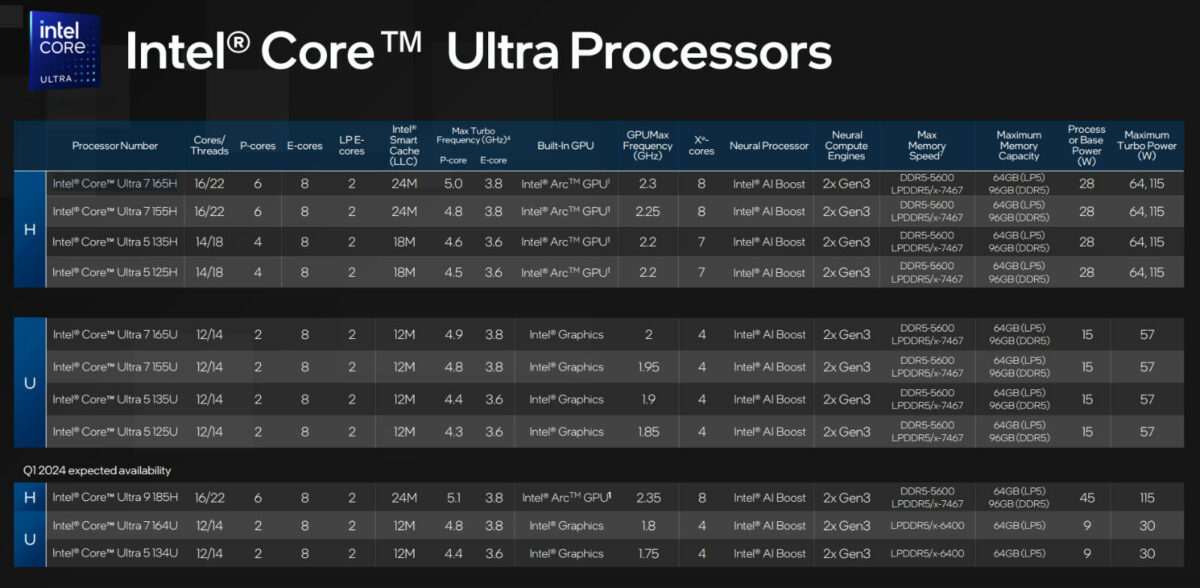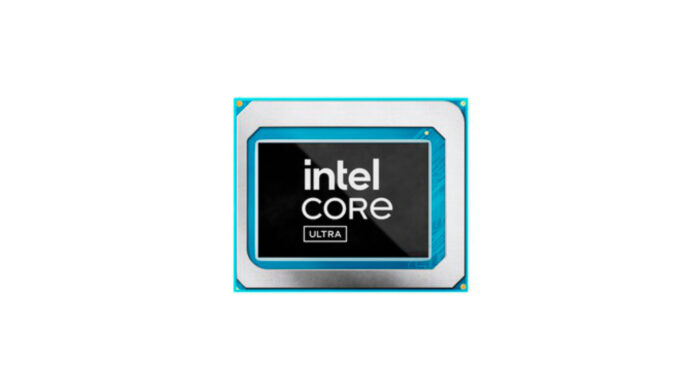Intel has finally launched its Core Ultra series of mobile CPUs, and they come with some pretty lofty claims. While there is reportedly a generational jump in performance, attention is instead squarely on AI and its ability to improve power consumption and scalability. On the whole, we’re told to expect around 2.5x better efficiency for your laptop.
Replacing Raptor Lake, we already know plenty about Meteor Lake’s multi-tile architecture. It’s pretty important to Intel, complete with a neural processing unit (NPU) and two low-power island E-cores to handle tasks more efficiently.
In action, Intel claims you’ll see at least a 25% reduction in power running Netflix on an Intel Core Ultra 7 165H versus the Raptor Lake equivalent Core i7-1370P. Intel’s senior director of client performance, Rob Hallock, is candid that it’s difficult to measure these benefits as threads tend to “move around a lot” but video playback is one of the more consistent ways to gauge efficiency.
Compared to AMD, Intel claims that the same CPU consumes 79% less power than Ryzen 7 7840U, but offers up to 11% better multi-threaded performance. It also fares similarly well against Qualcomm’s Snapdragon 8cx and Apple’s M3.
Models and specs
Intel Core Ultra mobile processors are set to power more than 230 of the “world’s first” AI PCs. Acer, Asus, Dell, Dynabook, Gigabyte, HP, Lenovo, LG, Microsoft, MSI, and Samsung devices are in the first wave, and Intel says it’s quite selective over the partners it chooses.
Intel Core Ultra 7 165H currently leads the pack with 22 threads and 16 cores (six P-cores, eight E-cores, and two new LPE-cores mentioned above). Like the other H-series processors, it comes packed with integrated Intel Arc graphics, where the Xe cores run up to 2.35GHz. The U-series sticks with regular old Intel Graphics instead, but this in turn helps keep the wattage lower.

Curiously, Intel has held back the flagship Ultra 9 185H until 2024 alongside a couple of U-series processors. That chip boasts the same cores and threads as the Ultra 7 165H, but bumps the max CPU and GPU frequency up to 5.1GHz and 2.35GHz respectively. The base power also jumps to a comparatively whopping 45W. Devices containing the other eight processors, from the entry-level Core Ultra 5 125U to the Ultra 7 165H, are already on the market.
Unlike the previous the Raptor Lake series, Intel is forgoing the P-series entirely. It makes sense, since the performance regularly came at the expense of battery life, and how long a laptop lasts is the entire focus of Core Ultra.
The Intel Evo guarantee
With Core Ultra comes a new generation of Intel Evo. This is Team Blue’s badge of honour to guarantee a standardised set of features in Core Ultra devices. Anything containing this label goes through a multi-point verification program to ensure consistency out of the box.
Intel’s VP and GM of clients, David Feng, says this focuses on five key areas: mobile performance, intelligent collaboration, multidevice experience, expanded Evo accessories, and sustainability. In short, it guarantees at least ten hours of battery life, a quick charge that juices it up in four-and-a-half hours, quick loading times, and operation that’s both cool and quiet.
All Core Ultra laptops should sit below 19dB, which is as quiet as a whisper, with some below 17dB. It should also never be hot to the touch, with a max 41°C temperature. The average will be around 37°C, which is the same as the average human body.
It also ensures efficiency. Thee generations ago, it cost around 12W to run collaboration programs, but now Meteor Lake runs as low as 3W. This then extends battery life for longer use.
If you work from your laptop one of the most interesting additions is the multi-device experience. Alongside better webcams and connectivity latency, Core Ultra lets you to extend your display to your smartphone and tablet seamlessly, and use your keyboard and mouse to control both devices. It’s not picky about platform, showcased using a Windows laptop and iOS iPad.
You’ll also be able to use Unison tech to send files between devices via QR code rather than whipping out your email. The recipient doesn’t need to install any apps to make it work. They just need to verify the two-factor authentication code with the sender and the file is theirs to download. This feature in particular begins with Core Ultra, but will eventually come to older platforms after some more testing.


